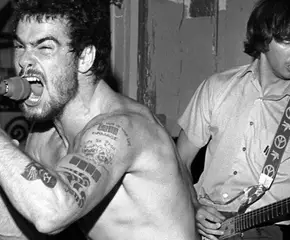At 9:02 a.m. on April 19, 1995, a bomb exploded in front of the Alfred P. Murrah Federal Building in Oklahoma City, killing 168 people.

Bob Daemmrich/Alamy Stock PhotoThe Alfred P. Murrah Federal Building in the aftermath of the Oklahoma City bombing.
At first, April 19, 1995 seemed like a normal day at the Alfred P. Murrah Federal Building in Oklahoma City, Oklahoma. Hundreds of federal employees and contract workers entered their offices in the building, and workers chatted with each other, dropped off their children at the building’s daycare center, or settled into their workday. Then, at 9:02 a.m., a 7,000-pound bomb hidden in a Ryder truck exploded outside the building — the Oklahoma City bombing had begun.
The explosion tore the face off the building, plunging those inside into chaos, darkness, and death. By the time the dust had settled, 168 people had been killed — including 19 children — and the survivors had to dig their way out of the smoldering debris. The shocked nation, reeling from the tragedy, demanded to know who was behind the attack.
Though some initially assumed that the Oklahoma City bombing was the work of Middle Eastern terrorists, the real culprit was closer to home. The attack had been organized by 27-year-old Timothy McVeigh, an Army veteran who had become disillusioned with the U.S. government, and outraged over the Waco siege and the standoff at Ruby Ridge.
This is the horrific story of the Oklahoma City bombing, the worst domestic terrorism attack in American history.
Timothy McVeigh Plans A “Retaliatory Strike”
The Oklahoma City bombing was planned by Timothy McVeigh, an Army veteran who had served in the Gulf War. McVeigh had once had fantasies of defending America as a teenager, but he returned from the conflict disillusioned, and struggled to adapt back to civilian life.
In 1992, McVeigh was outraged by the Ruby Ridge incident — in which federal agents besieged Randy Weaver in Idaho, killing Weaver’s wife and 14-year-old son — and traveled to Waco, Texas, when he learned that federal agents had tried to raid the Branch Davidian compound in February 1993. McVeigh sold bumper stickers to support the Branch Davidians with slogans like: “Fear the Government that Fears Your Gun.”
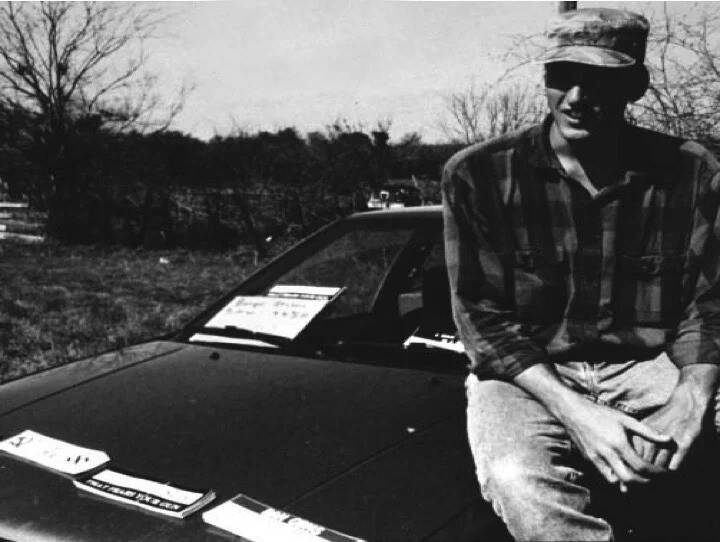
Federal Bureau of InvestigationTimothy McVeigh selling bumper stickers in Waco, Texas.
He was enraged when federal agents, convinced the Branch Davidians were stockpiling guns, attacked the group’s compound on April 19, 1993 after a 51-day standoff. Ultimately, 76 Branch Davidians were killed, including their leader, David Koresh, his wife, Rachel, and 25 children.
In the aftermath, Timothy McVeigh began to plot a “retaliatory strike.” He chose April 19th, the date of the Waco massacre as well as the anniversary of the Battles of Lexington and Concord, which led to the American Revolution, as the date he would attack.
“I didn’t define the rules of engagement in this conflict,” Timothy McVeigh told his biographers Lou Michel and Dan Herbeck, who wrote American Terrorist: Timothy McVeigh and the Oklahoma City Bombing. “The rules, if not written down, are defined by the aggressor. It was brutal… Women and children were killed at Waco and Ruby Ridge. You put back in [the government’s] faces exactly what they’re giving out.”
How The Oklahoma City Bombing Unfolded
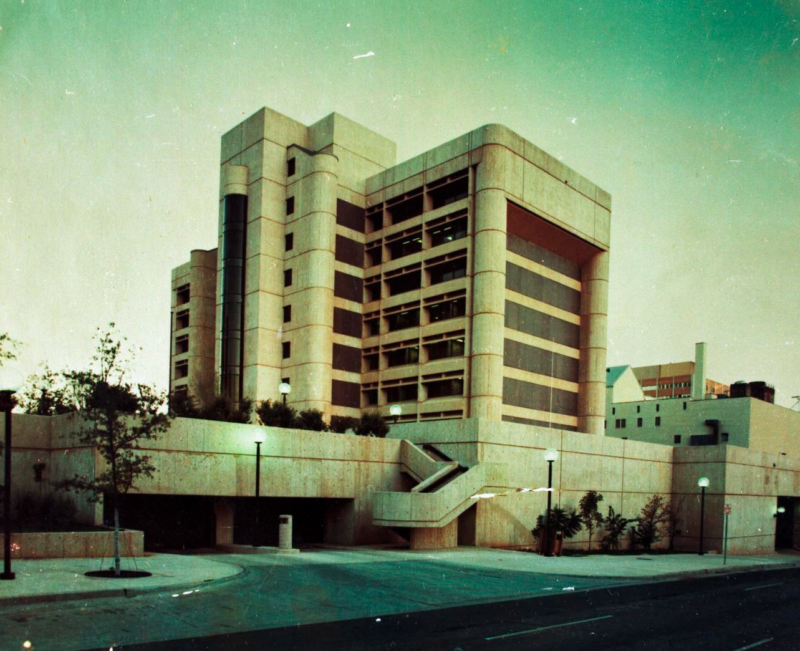
Oklahoma Historical SocietyThe Alfred P. Murrah Federal Building before the Oklahoma City bombing.
Timothy McVeigh planned the Oklahoma City bombing over the course of several months, with the help of Terry Nichols and Michael Fortier, friends he’d made in the Army. He chose the Alfred P. Murrah Federal Building in Oklahoma City because he believed attacking a federal building would serve “more purposes than other options,” according to letters he wrote while in prison. (McVeigh had also spent some time on the gun show circuit, selling items like The Turner Diaries, a controversial novel about a man who blows up the FBI building in Washington, D.C.)
McVeigh and Nichols collected the materials they needed to build a powerful bomb, including agricultural fertilizer, diesel fuel, and other chemicals. And on April 19, 1995 — the two-year anniversary of the last day of the Waco siege — McVeigh rented a Ryder truck and drove the bomb into the heart of Oklahoma City, Oklahoma.
Shortly before 9 a.m., McVeigh parked the truck in front of the Alfred P. Murrah Federal Building where, inside, some 600 federal workers and contractors, 250 visitors, and 21 children in the building’s daycare center had begun to settle into their day. As McVeigh ignited two timed fuses and began to walk away, Capt. Henderson Baker II, a U.S. recruiting battalion captain, was on the fourth floor talking to a colleague. On the ninth floor, Jim Staggs of the Bureau of Alcohol, Tobacco and Firearms was on the phone. And at a post office about two blocks away from the building, Clytie Bunyan was getting passports for herself and her son.
Then, at 9:02 a.m., the bomb exploded.
According to the FBI, a third of the building was obliterated; some of its floors were crushed “like pancakes.” Dozens of nearby cars were incinerated and about 300 other buildings were damaged or destroyed.
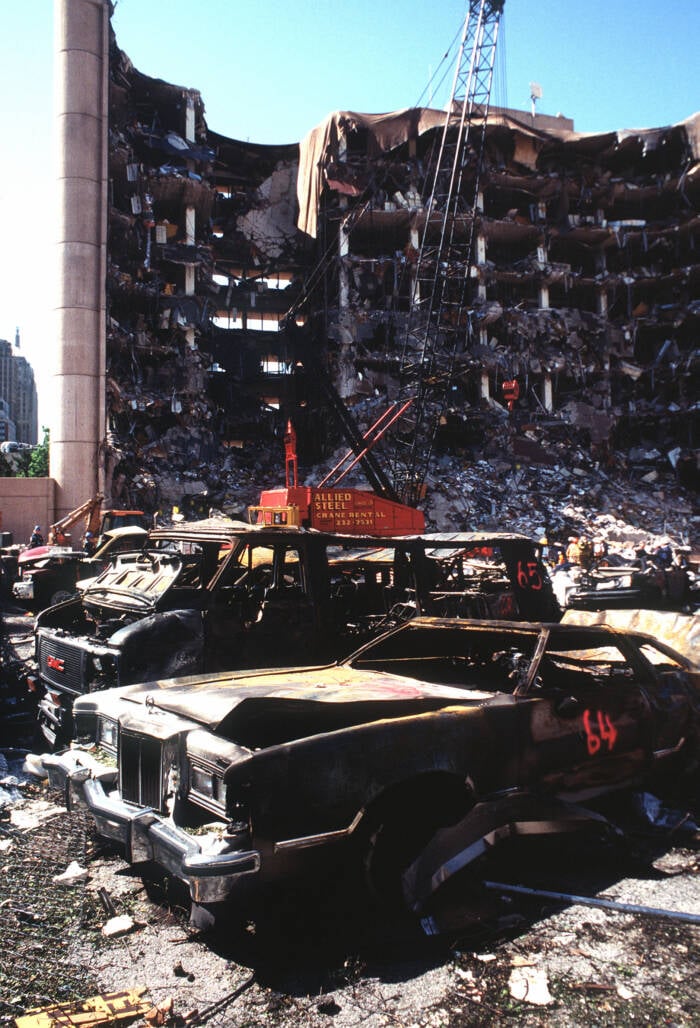
Department of DefenseThe aftermath of the Oklahoma City bombing. April 21, 1995.
Inside, those who’d survived found themselves trapped in a hellscape.
“I just didn’t know what was going on,” Baker later told The Oklahoman. “I just didn’t know. It was dark, black, and I was falling.”
Baker came to on the first floor — he’d fallen three stories. Staggs and his colleague were trapped and surrounded by debris, their shirts gone, their slacks bloodied. Bunyan “heard a boom,” then “the ceiling started falling.” She managed to dash outside the post office to safety.
Dan Webber, working near the Murrah building, ran inside to find his 20-month-old son, Joseph, who had been dropped off at the daycare on the second floor. But when Webber arrived, “there was no second floor.”
“It was like walking to the edge of a swimming pool,” Webber recalled. “The rest of the building was gone. There was just this big pile of gray. There was no movement in this gray pile. There were no sounds.”
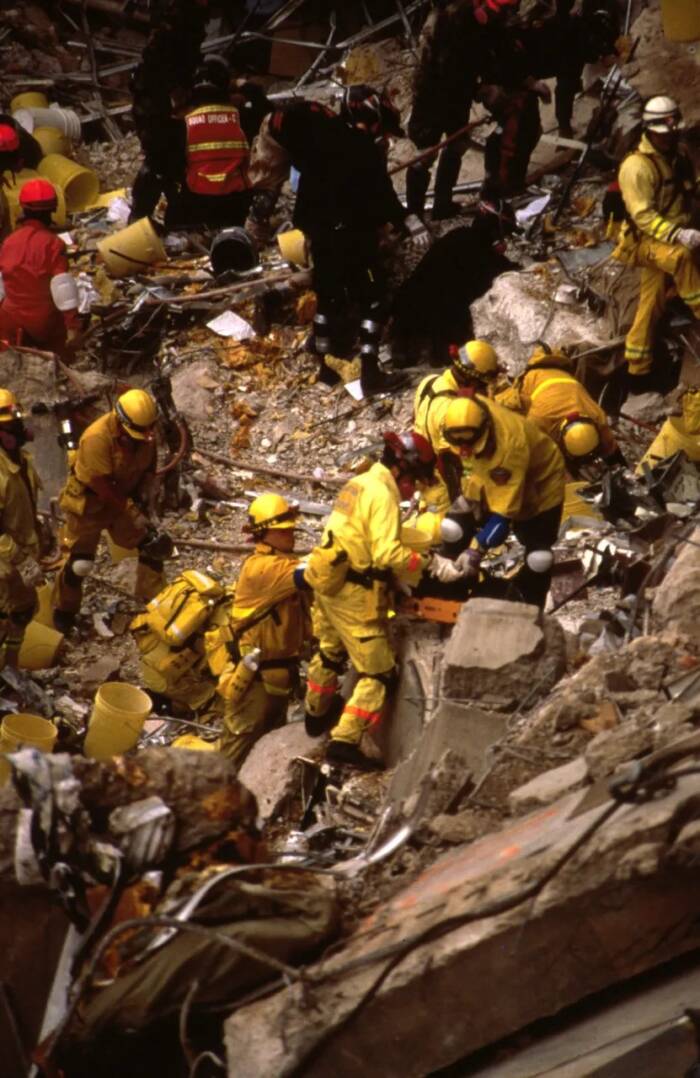
FEMASearch and rescue teams scouring the debris at the Alfred P. Murrah Federal Building in the aftermath of the Oklahoma City bombing in the hopes of saving anyone trapped under the debris.
Miraculously, Joseph Webber was rescued alive from the rubble by a police officer who had rushed to the scene. But of the 21 children in the daycare that day, only six survived the bombing.
Ultimately, Baker, Staggs, Bunyan, and Joseph Webber were some of the lucky ones. The Oklahoma City bombing killed 168 people, including 19 children (a few of whom were not in the daycare). But it didn’t take investigators long to figure out who was behind the terrorist attack.
Timothy McVeigh Is Arrested For The Oklahoma City Bombing
Although many people initially speculated that the Oklahoma City bombing was the work of Middle Eastern terrorists — the recent 1993 World Trade Center bombing was fresh in many people’s minds — McVeigh was identified as the prime suspect almost immediately.
As the FBI reports, he’d been pulled over by an Oklahoma state trooper just 90 minutes after the Oklahoma City bombing. The state trooper had no reason to suspect him in the attack — rather, he’d noticed McVeigh’s missing license plate on his getaway car, and then had arrested him after realizing that he also had a concealed weapon.
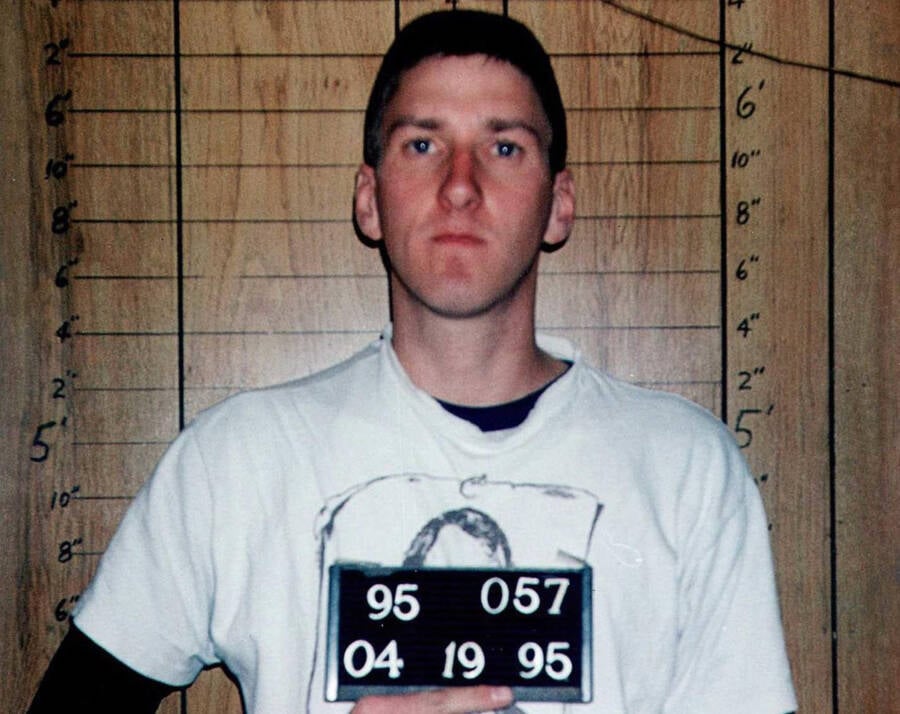
GL Archive/Alamy Stock PhotoTimothy McVeigh after his arrest on April 19, 1995 — just 90 minutes after the Oklahoma City bombing.
While McVeigh was in police custody, investigators were able to link the rented Ryder truck to a body shop in Junction City, Kansas. Workers there described the man who had rented the truck, and local hotel employees recognized the investigators’ composite drawing of the suspect. They even provided his name: Tim McVeigh.
Finding McVeigh already in police custody, investigators also found traces of the chemicals used in the bombing on McVeigh’s clothes and a business card, on which he’d written: “TNT @ $5/stick, need more.”
Timothy McVeigh was found guilty at his trial in 1997 and sentenced to death for the Oklahoma City bombing. Terry Nichols was sentenced to life in prison without parole for conspiring to use a weapon of mass destruction, and Michael Fortier was sentenced to 12 years in prison for failing to inform authorities about the bombing plot.
But through it all, McVeigh claimed sole responsibility for the bombing. To those who suspected he had help from some larger organization while plotting the attack, McVeigh exclaimed: “You can’t handle the truth… Because the truth is, I blew up the Murrah Building, and isn’t it kind of scary that one man could wreak this kind of hell?”
He was executed on June 11, 2001, at the age of 33.
The Aftermath Of The Worst Domestic Terrorist Attack In U.S. History

Visions of America, LLC/Alamy Stock PhotoPictures and mementos hanging from a temporary memorial after the Oklahoma City bombing.
The Oklahoma City bombing had struck at the heart of Oklahoma City. In addition to the dead, about 700 people had been injured and, according to The Oklahoman, the bombing had caused an estimated $652 million worth of damage. But the city was determined to rebuild.
On May 23, 1995, just a month after the bombing, the Alfred P. Murrah Federal Building was demolished. According to the Oklahoma City National Memorial & Museum, Mayor Ron Norick then appointed a 350-member task force “to explore ways to remember this tragic event and honor those killed.” In February 2001, the Oklahoma City National Memorial & Museum opened to the public.
The memorial includes a “Field of Empty Chairs,” which honors and mourns the 168 people who died with empty chairs, a reflecting pool, and a structure called the “Gates of Time.” As the memorial explains: “The 9:01 Gate represents the innocence before the attack. The 9:03 Gate symbolizes the moment healing began.”
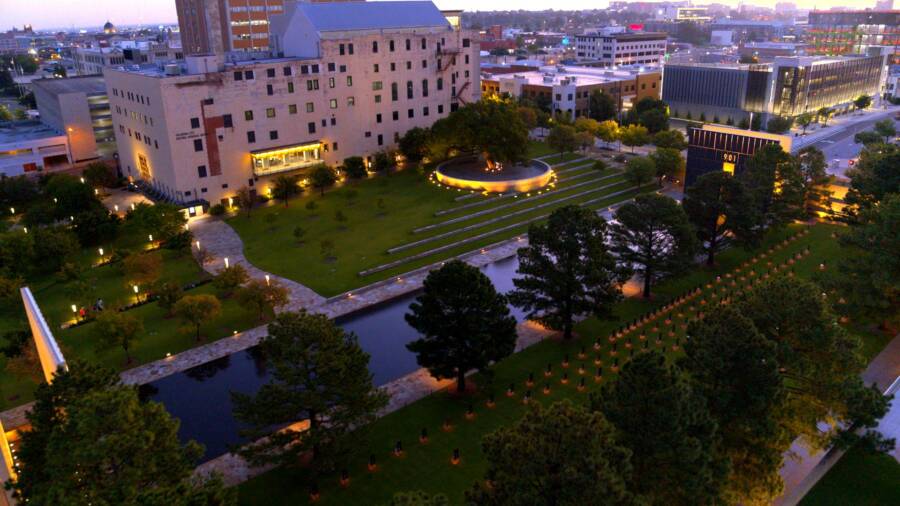
Oklahoma City National Memorial & MuseumThe Oklahoma City National Memorial & Museum, which was built on the site of the Alfred P. Murrah Federal Building.
The memorial has also preserved the stories of the 168 men, women, and children who were killed in the Oklahoma City bombing — from three-year-old Peachlyn Bradley, who died alongside her grandmother and three-month-old brother, to Secret Service agent Donald Ray Leonard, who was planning to retire shortly before he was killed.
Sadly, however, Timothy McVeigh’s violent act also inspired others. During the 1999 Columbine school shooting, the killers purportedly hoped to kill enough people to “beat” McVeigh’s body count in Oklahoma City.
And, indeed, the Oklahoma City bombing left a lasting impact on those who survived. Joseph Webber, now an adult, told PEOPLE in 2015 that he’s still processing what happened to him as a little boy.
“Truthfully, I don’t think I have fully come to terms with it,” Webber, who still bears scars on his face and arm, remarked. “For someone who doesn’t remember anything, it’s just an incredible story that’s hard to believe, and so I just have to keep reminding myself that it’s true, and how significant it is in my life and other people’s lives… It’s made me hopeful as well as grateful for the little things. Because you never know when even the little treasures can be taken away.”
After reading about the Oklahoma City bombing, learn about the 1920 Wall Street bombing, New York City’s first major terrorist attack. Or, look through these haunting photos of the September 11th terrorist attack.





